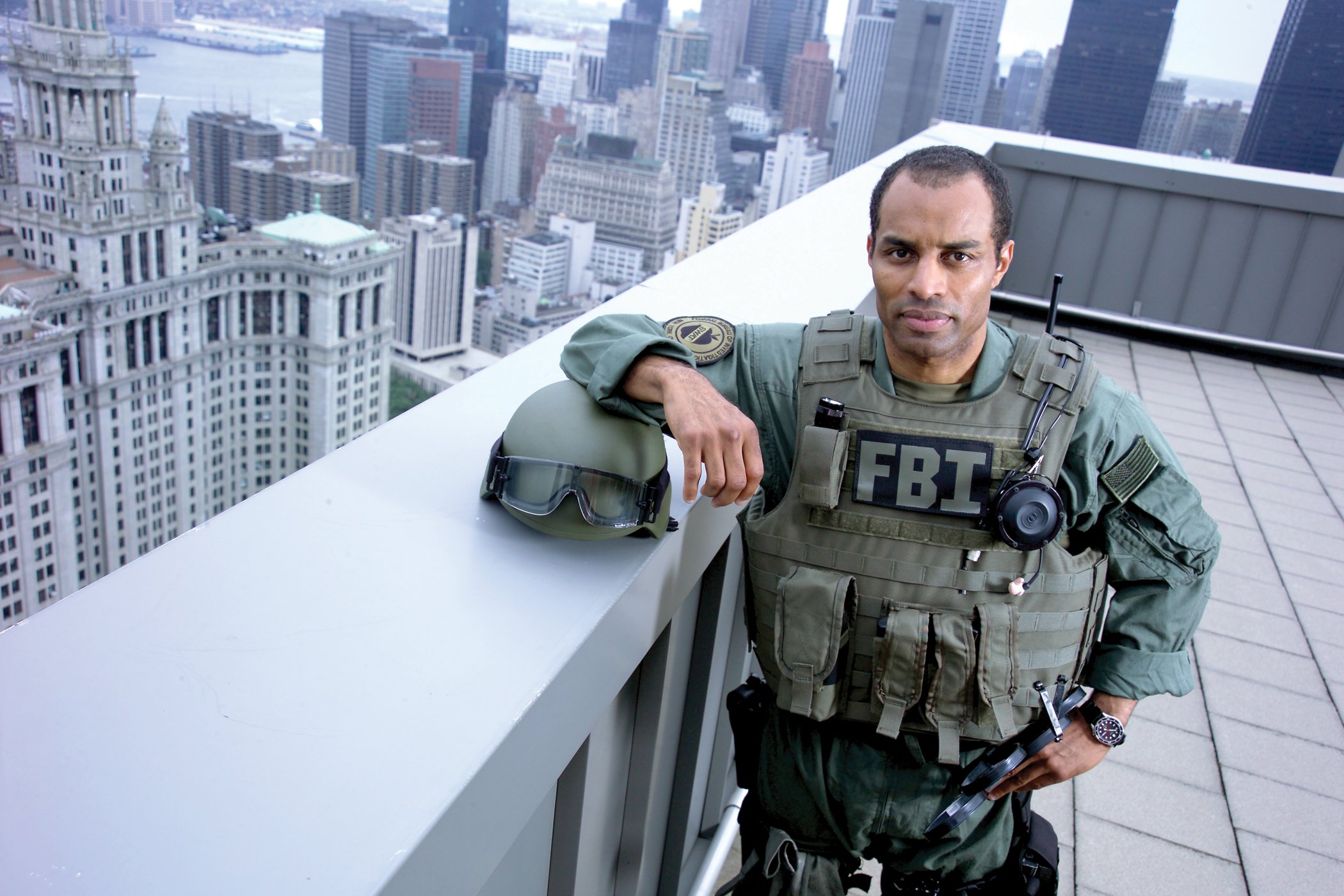Table of Contents
- Introduction
- The History of FBI Uniforms
- Current FBI Uniform Guidelines
- Components of FBI Attire
- Specialized Equipment for FBI Agents
- FBI Uniforms in Pop Culture
- Training and Uniform Standards for FBI Agents
- FBI Uniforms vs. Other Law Enforcement Agencies
- Maintaining and Upgrading FBI Uniforms
- The Future of FBI Uniforms
- Conclusion
Introduction
When you think of FBI uniforms, the image of a well-dressed federal agent in a crisp suit might come to mind. However, the reality of FBI attire is far more nuanced and functional than the stereotypical Hollywood portrayal. The Federal Bureau of Investigation (FBI) is one of the most prestigious law enforcement agencies in the world, and its agents are often seen as the epitome of professionalism. A significant part of this image is derived from the attire they wear, which plays a crucial role in their daily operations.
The FBI uniform is not just about looking professional; it is a critical component of their identity and functionality. Agents are required to wear attire that not only reflects their authority but also ensures their safety and efficiency in the field. This article delves into the intricacies of FBI uniforms, exploring their history, current guidelines, and the role they play in the agency's operations.
From the iconic suits to tactical gear used in high-risk situations, FBI uniforms are designed to meet the unique demands of federal law enforcement. This guide will provide a comprehensive overview of what constitutes FBI attire, how it has evolved over time, and its significance in maintaining the agency's reputation. Whether you are a law enforcement enthusiast, a student, or simply curious, this article will shed light on the fascinating world of FBI uniforms.
Read also:Discover The Enchanting World Of Soundra Blust A Comprehensive Guide
The History of FBI Uniforms
The history of FBI uniforms is deeply intertwined with the evolution of the agency itself. When the FBI was established in 1908, there was no standardized uniform for its agents. Instead, agents wore civilian clothing that reflected the era's fashion trends. This lack of uniformity was partly due to the agency's initial focus on investigative work rather than field operations.
During the 1930s, as the FBI gained prominence in combating organized crime and bank robberies, the need for a more professional appearance became evident. Agents began adopting a more formal dress code, typically consisting of dark suits, white shirts, and ties. This iconic look became synonymous with the FBI and was reinforced by media portrayals of agents in films and television.
Key Milestones in FBI Uniform Evolution
- 1940s: Introduction of standardized dress codes for agents.
- 1970s: Adoption of tactical gear for specialized units.
- 2000s: Integration of modern technology into uniforms.
Over the decades, the FBI's approach to uniforms has evolved to meet the changing demands of law enforcement. From the classic suit to advanced tactical gear, the agency's attire reflects its commitment to professionalism and adaptability.
Current FBI Uniform Guidelines
Today, the FBI has a well-defined set of uniform guidelines that agents must adhere to. These guidelines ensure consistency and professionalism across the agency while allowing for flexibility based on the nature of the assignment. The FBI's dress code is divided into two main categories: office attire and tactical gear.
Read also:Understanding Mmsdose A Comprehensive Guide To Its Uses Benefits And Risks
Office Attire
For day-to-day operations, FBI agents are required to wear business formal attire. This typically includes:
- Dark suits (navy blue or charcoal gray)
- White or light blue dress shirts
- Conservative ties for male agents
- Professional footwear (dress shoes)
Tactical Gear
In high-risk situations, agents switch to tactical gear designed for safety and functionality. This includes:
- Ballistic vests
- Tactical boots
- Utility belts with essential equipment
- Camouflage or dark-colored uniforms for covert operations
These guidelines are not arbitrary; they are designed to ensure that agents are prepared for any scenario while maintaining a professional image. The FBI's uniform policy is regularly updated to incorporate advancements in technology and changes in operational requirements.
Components of FBI Attire
FBI attire is composed of several key components, each serving a specific purpose. Understanding these components provides insight into the functionality and professionalism of the agency's uniform policy.
Business Formal Attire
The cornerstone of FBI attire is the business formal look, which includes:
- Suits: Typically made from high-quality wool or polyester blends, these suits are durable and professional.
- Shirts: White or light blue dress shirts are standard, providing a clean and authoritative appearance.
- Ties: For male agents, ties are an essential component, often in solid colors or subtle patterns.
Tactical Gear
In the field, agents rely on tactical gear to ensure their safety and effectiveness. Key components include:
- Ballistic Vests: Designed to protect agents from gunfire, these vests are lightweight yet durable.
- Tactical Boots: These boots provide support and protection during physical operations.
- Utility Belts: Equipped with handcuffs, radios, and other essential tools, these belts are critical for fieldwork.
Each component of FBI attire is carefully chosen to balance professionalism with functionality, ensuring that agents are prepared for any situation they may encounter.
Specialized Equipment for FBI Agents
In addition to their standard attire, FBI agents are equipped with specialized gear designed to enhance their capabilities in the field. This equipment is tailored to the unique challenges faced by federal agents and is a testament to the agency's commitment to safety and efficiency.
Communication Devices
Effective communication is critical for FBI operations. Agents are equipped with:
- Secure radios for real-time communication
- Earpieces for discreet communication
Weapons and Ammunition
FBI agents are trained in the use of firearms and carry weapons suited to their assignments. Common firearms include:
- Glock pistols
- Shotguns for specialized operations
Surveillance Tools
For investigative work, agents use advanced surveillance equipment, such as:
- Hidden cameras
- Listening devices
This specialized equipment ensures that FBI agents are well-prepared for their diverse range of responsibilities, from routine investigations to high-stakes operations.
FBI Uniforms in Pop Culture
FBI uniforms have long been a staple of popular culture, appearing in films, television shows, and books. These portrayals often emphasize the iconic suit-and-tie look, reinforcing the public's perception of FBI agents as professional and authoritative figures.
Famous Portrayals in Media
Some of the most memorable depictions of FBI agents include:
- "The X-Files": Agents Mulder and Scully often wore suits, reflecting the agency's professional image.
- "FBI": This TV series showcased the agency's investigative work and the attire of its agents.
While these portrayals are often dramatized, they highlight the cultural significance of FBI uniforms and their role in shaping public perception.
Training and Uniform Standards for FBI Agents
FBI agents undergo rigorous training to ensure they meet the agency's high standards, including those related to attire. The FBI Academy in Quantico, Virginia, plays a crucial role in preparing agents for their responsibilities.
Uniform Training
During training, agents learn the importance of maintaining a professional appearance and adhering to uniform guidelines. This includes:
- Proper grooming standards
- How to care for and maintain uniforms
Field Training
Agents also receive hands-on training in the use of tactical gear, ensuring they are prepared for field operations. This training emphasizes:
- Equipment usage
- Safety protocols
By instilling these standards, the FBI ensures that its agents are not only skilled but also professional in their appearance and conduct.
FBI Uniforms vs. Other Law Enforcement Agencies
While FBI uniforms share similarities with those of other law enforcement agencies, there are distinct differences that set them apart. These differences reflect the unique role and responsibilities of FBI agents.
Comparison with Police Uniforms
Unlike police officers, who often wear uniforms with badges and patches, FBI agents typically wear business formal attire. This difference underscores the FBI's focus on investigative work and covert operations.
Comparison with Military Uniforms
FBI tactical gear is similar to military uniforms in terms of functionality but differs in design and purpose. While military uniforms are designed for combat, FBI gear is tailored for law enforcement operations.
These distinctions highlight the specialized nature of FBI uniforms and their role in supporting the agency's mission.
Maintaining and Upgrading FBI Uniforms
The FBI places a strong emphasis on maintaining and upgrading its uniforms to ensure they meet the highest standards. This process involves regular inspections, updates to guidelines, and the adoption of new technologies.
Regular Inspections
Agents are required to regularly inspect their uniforms and equipment to ensure they are in good condition. This includes:
- Checking for wear and tear
- Replacing damaged items
Technological Advancements
The FBI continually incorporates new technologies into its uniforms, such as:
- Lightweight materials for ballistic vests
- Advanced communication devices
By staying ahead of technological advancements, the FBI ensures that its agents are equipped with the best possible tools for their work.
The Future of FBI Uniforms
As technology continues to evolve, so too will FBI uniforms. The agency is likely to adopt innovations that enhance safety, functionality, and professionalism. Potential advancements include:
- Smart uniforms with embedded sensors
- Enhanced ballistic protection
These developments will ensure that FBI agents remain at the forefront of law enforcement, equipped with the tools they need to succeed in an ever-changing world.
Conclusion
FBI uniforms are more than just clothing; they are a reflection of the agency's professionalism, adaptability, and commitment to excellence. From their historical roots to their modern-day applications, these uniforms play a crucial role in the FBI's operations and public image.
We have explored the history, components, and significance of FBI attire, as well as its portrayal in popular culture and its comparison with other law enforcement agencies. By understanding these aspects, we gain a deeper appreciation for the role that uniforms play

